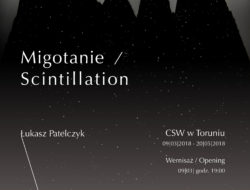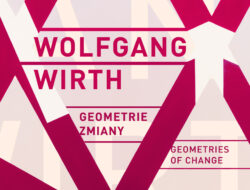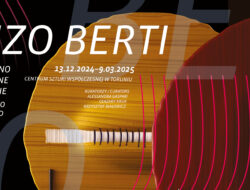When: 16 March – 22 April 2018
Exhibition opening: 16 March 2018, 7pm
Curators: Marta Dziomdziora, Arkadiusz Marcinkowski
Co-ordinator: Dorota Sobolewska
Artists: Marta Dziomdziora, Małgorzata Kopczyńska, Julia Kurek, Arkadiusz Marcinkowski, KED Olszewski, Maciej Osmycki, Martyna Rzepecka, Dorota Tołłoczko-Femerling, Tomasz Wendland and students: Kamila Dereń, Karolina Kaleta, Sandra Leszczyńska, Ewelina Maksimiuk, Adrian Michalak, Paula Prus, Natalia Rachowska, Kamila Rorbach, Kamil Rudziński, Iga Śmierzchalska, Adrian Taraszkiewicz, Andrzej Witczak, Andrzej Wochnik
Co-exhibitors: Andreas Guskos, Mirosław Pawłowski
The exhibition showcases the accomplishments of the Department of Interdisciplinary Graphic in the Faculty of Visual Arts of the Academy of Art in Szczecin, the unit of the Academy composed of several ateliers focusing on contemporary graphic design in a broad sense. The Department in its day-to-day work is particularly intent on the state-of-the-art technological advances and gives priority to interactive graphic design, games and virtual reality.
The Department was established in 2015 and its structure consists in the collective work of artists involved in numerous art disciplines. Thus far they have presented their artistic output at collective exhibitions in Berlin, Thessaloniki, Tbilisi, Szczecin, the Wyspa Institute of Art in Gdańsk and other places. All exhibitions included a selection of works by students of the Department.
The title of the exhibition may be interpreted in a number of ways. GO is an ancient Chinese board game, a blend of science, art, and sport. It bears many resemblances to chess and is often thought to be the most demanding of all logical games, although it differs from them on account of its numerous rules which are subject to modification. The game of Go is played on a square playing board covered with a grid of nineteen vertical and horizontal lines. There is an idea behind this odd number as the centre of the board represents perfection, ‘the origin of heaven’. It is designed for two players taking turns placing white and black stones on the board. The strategy to win consists in expansion: one has to surround the rival with their stones and take hold of a larger portion of the board. Researchers have been using the game for testing artificial intelligence, most notably by the Deep Mind company (owned by Google) who set up an AI machine which defeated the world champion in the game of Go and thus humbled the human brain.
GO represent also the first two letters of the name of the most popular Internet search engine derived from the mathematical figure of googol (i.e. 10100, in decimal notation it is written as the digit 1 followed by one hundred zeroes), the largest number ever imagined, greater than the number of atoms in the universe known to us.
GO may also be interpreted as an abbreviation for ‘game on’ or ‘game over’.
‘GO’ is also one of the most versatile English words with numerous dictionary definitions (368 meanings). It functions either as a verb or a noun and most commonly refers to walking, moving or entering, but may also signify other actions, such as reaching for something, travelling, disappearing, relenting, betting, leading somewhere or, metaphorically, dying.
‘GO’ is also ‘a move’ or ‘a turn’ in games, but may also mean ‘a coincidence’, ‘an attempt’ or, informally, ‘consent’.
GO in Polish is the accusative form of the masculine personal pronoun (‘him’). In Danish it means ‘to bark’, while in French it functions as a colloquial and offensive term denoting a girl.
The multiplicity of meanings multiplies possible interpretations: it may refer to playing games in our lives, with ourselves or with another person (or with a person confronted with a work of art), to a (potentially revolutionary) coincidence, to movement in the literal sense (going forward, making progress) and to metaphoric movement, such as transcending the borders between beings and time, or between action and disappearing (or dying).
Tags: exhibition
 The Institution is funded from the budget of Toruń Municipality
The Institution is funded from the budget of Toruń Municipality






